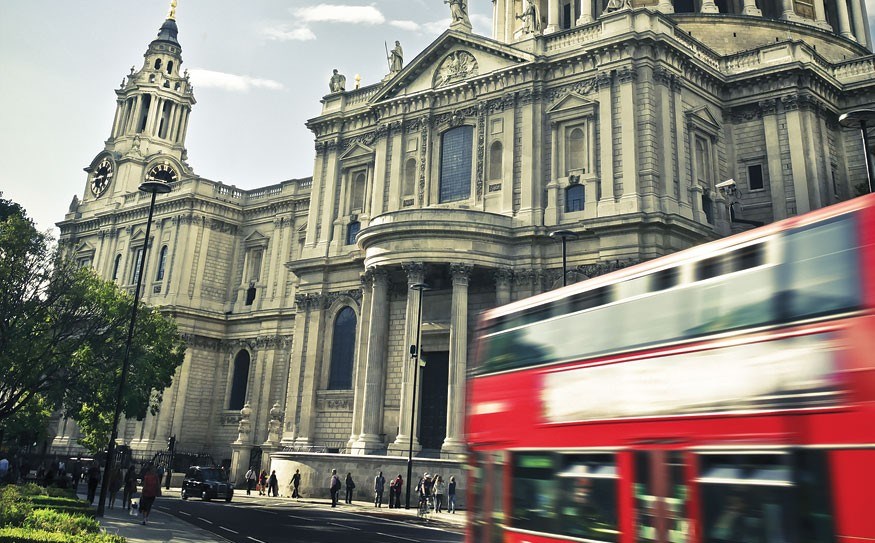The London Eye Ferris wheel, on the River Thames, seems an apt symbol for London. Rotating almost non-stop, it hints at the circus atmosphere that pervades the popular sights of inner London — or of Paris, Amsterdam, Vienna, Berlin or Rome — in a European tourism industry that operates year-round.
Good reason then to at least temporarily flee Trafalgar and Leicester squares, Covent Garden or Oxford and Piccadilly circuses, to explore the often older, lesser known and less inundated parts of this evocative city.
Armed with notes and maps on walks in Victorian London, I began with the matrix of courts, mews, alleyways and passages of the areas known as St. James and Mayfair. Flush with Green Park and St. James Park, and close to St James and Buckingham palaces, this is where the sprawling patrician houses of 19th-century London once stood (and linger, if mostly broken up into apartments or transformed into hotels), the long-time exclusive men's clubs remain, and the wealthiest Londoners still dine and shop.
One honeycomb of walkways, centred around Jermyn Street, embraces luxury shops such as those of the Burlington and Princes arcades, but also streets like Savile Row, where you can look up into the reception room, perhaps catching sight of someone ordering a bespoke suit, or look below the wrought-iron railing into the workshop where the most accomplished tailor or seamstress is cutting and sewing.
If you traverse Queen's Way, on the edge of Green Park, you can slip into St. James by negotiating a covered passage that brings you out at the luxury Stafford Hotel, and close to Spencer House, the former townhouse of the late Princess of Wales' family, now on lease to Lord Rothschild.
Off Duke Street, I turned into Mason's Yard, once the stable yard to St. James Palace. Today it's a kind of laneway-cum-backyard to the privately subscribed London Library, and graced with discrete antique and art shops. The large "yard" appears private, austere, sleek and chic — just like its residents like it, no doubt.
On another day, I walked eastward from the (justifiable) madness of Bloomsbury and the British Museum, across Southampton Row, and into the neighbourhood that Charles Dickens called home during the early years of his financial success.
Pass through an alley called Cosmos Place, and you're in Queen Square, close to the Great Ormand Street Hospital. Suddenly, London feels peaceable and neighbourly.
My walking map took me on past Coram's Fields, one of many sites that feature in Dickens' novels, to Doughty Street, where, at the Dickens House Museum, you can examine the considerable comfort the author was able to purchase with the earnings of Pickwick Papers and Oliver Twist.
But my most determined walking took me to the City of London, in and around St. Paul's. From Ludgate Hill, topped by the cathedral, I ambled the nooks and crannies where centuries-old guildhalls, with their glorious hanging signs, still do business: among them the Stationers' Hall ("Worshipful Company of Stationers and Newspaper Makers"), and the Cutlers' Hall (makers of knives and swords).
From Paternoster Square — once the domain of booksellers, and obliterated during the Second World War — I slipped through Temple Bar and down a series of wending lanes that felt more like an Italian or Spanish hillside setting than the heart of financial London. Nestled along the cobble byways were Continental-style grocers and eateries that would not be out of place in a Mediterranean town.
At the foot of Creed Lane and St. Andrew's Hill, I came across St. Andrew-by-the-Wardrobe (named for the fact that it was once a storehouse for "royal accoutrements"), one of the many churches rebuilt after the war. I was surprised by the heady presence of Catholic incense. I've since learned that this church is used on Sundays by the Orthodox Syrians of India—yet more evidence of London's cosmopolitan character.
The City is chock-a-block with smallish churches — many designed by the 17th century architect Christopher Wren. Among the most celebrated today is St. Stephen Walbrook, near Mansion House and the Bank of England, with its domed interior, Henry Moore altar, and beautifully intact alter screen or reredos, comprised of gold script.
Many of London's older churches retain these original reredos. And in my wanderings in the City I went in half a dozen, including the perfectly restored St. Vedast, with its garden courtyard; Saint Martin Within Ludgate, revealing a disarming old-world simplicity and rusticity; St. Mary Abchurch, also virtually unaltered since opening in 1676; and, perhaps the best known, the circular Temple Church, with Knights Templars interred in the floor to great effect.
Some remain parish churches. Swing into Bengal Court, for example, past the George and Vulture pub, through George Yard, and you just happen into a darkish courtyard off Clements Lane and St. Clement's Church (not to be confused with the well-known RAF church, St. Clement Danes, in the Strand).
After visiting St. Clement's, I literally wandered onto the Victorian-era Leadenhall Market, where, as is the way in Britain, late-afternoon pub-goers consumed their glasses of beer standing out in the passageways. Instead, I settled down at a patisserie with tea and a decadent chocolate tart.




